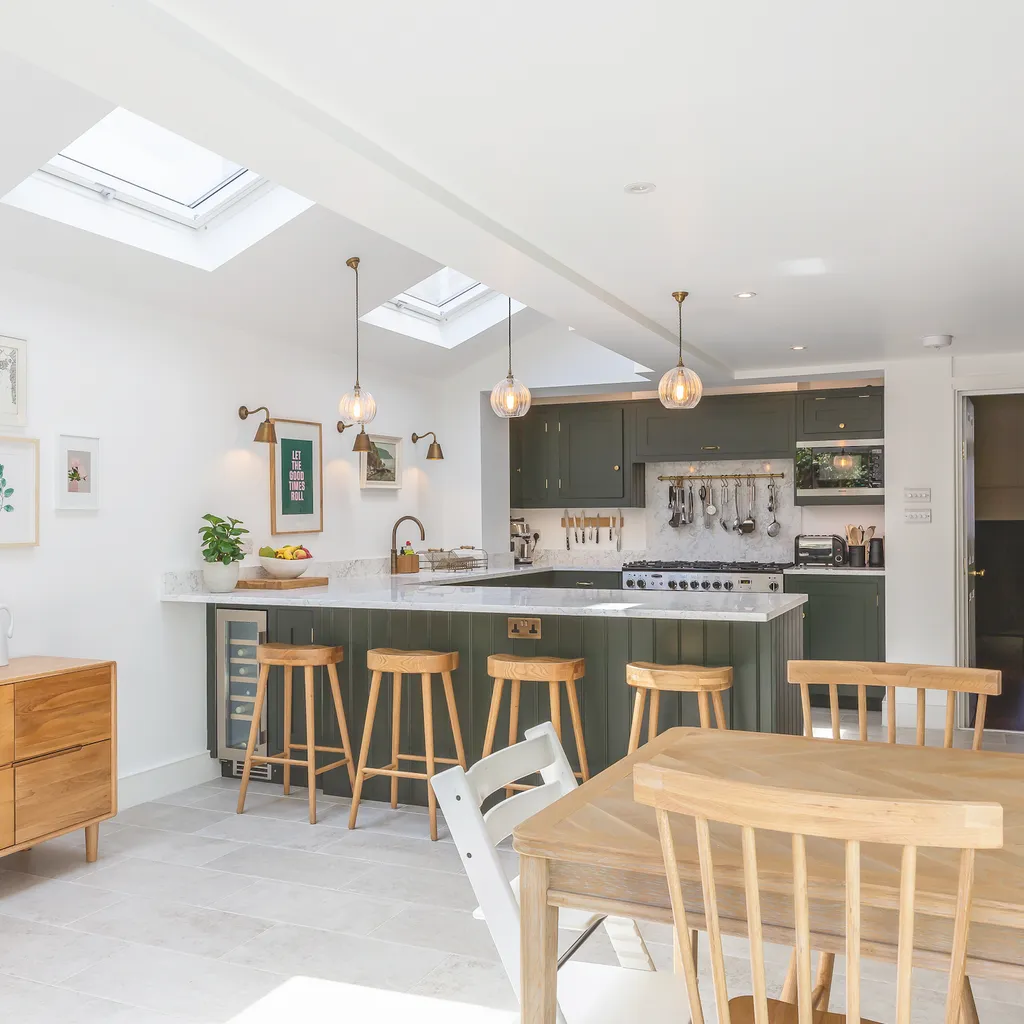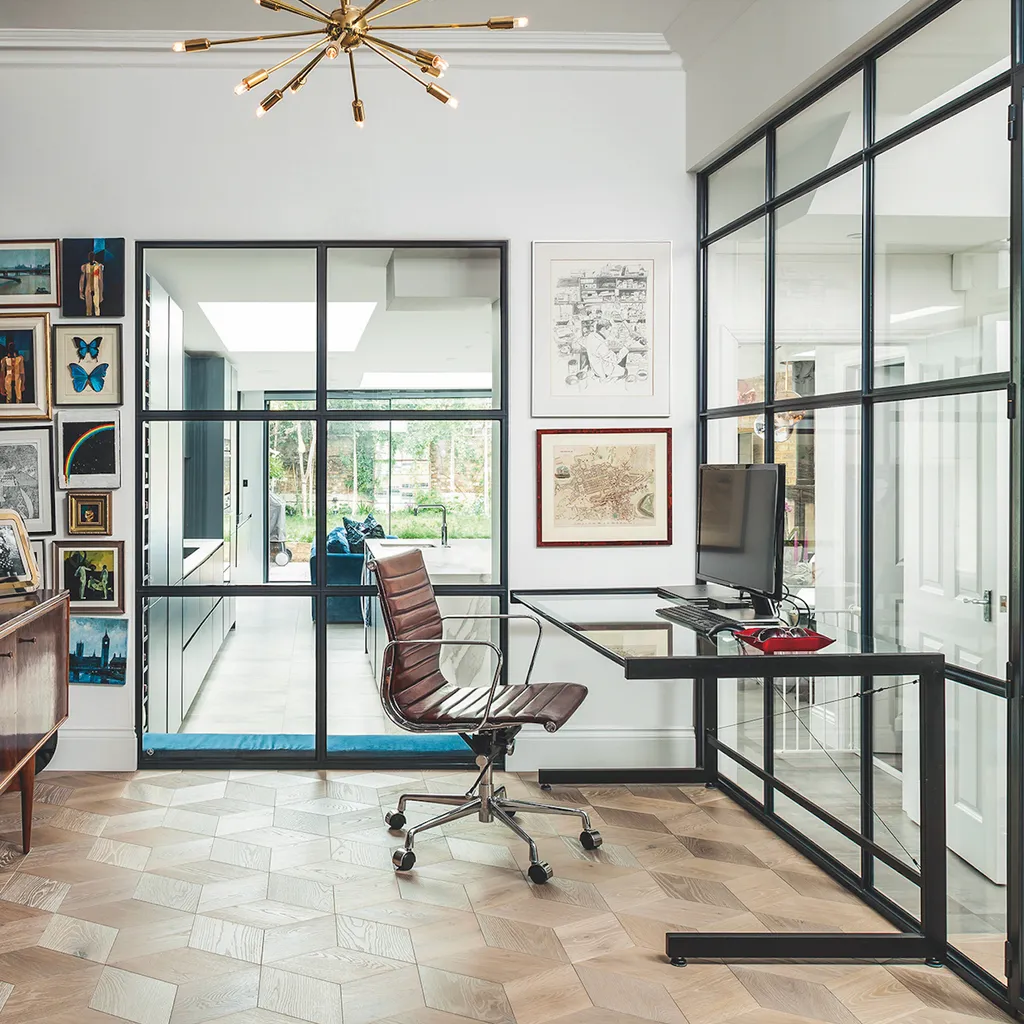The most successful home improvements are those that not only maximise space and light to make your home more functional, attractive and comfortable for your family, but that also boost its value. Adding value is one of the top reasons people want to make changes to their properties, but certain upgrades affect the price far more than others - and some can even knock value off! Whether you’re thinking of putting your home on the market soon or planning for the long term, these are the projects to consider...
Keep on top of home maintenance
A well-presented home always has the edge over one that looks unloved. It’s far more attractive to prospective buyers, giving you the best possible chance of achieving the highest price and selling quickly. Stay on top of small repair jobs, like filling cracks and holes in walls, fixing leaky taps, and refreshing kitchen and bathroom grout.
Keep an eye out for walls and woodwork that are starting to look a little drab - wash them down, and apply a fresh coat of paint if needed. If you're considering selling up in the near future, opt for pale, neutral tones that appeal to the greatest number of people. That means off-whites, creams, muted greys and greens.
Build an extension

A recent report by Nationwide revealed that a 10% increase in floor space typically increases a property’s value by 5%, and that an extension can boost it by up to 25%. Depending on the complexity of the job, you should expect to pay from around £45,000 for a single-storey rear extension and from around £75,000 for a double-storey addition.
For the best returns on your investment, the new space should be usable – for example an open-plan kitchen/diner or a family room. But before you jump in, it’s worth doing some research on the ceiling price – that is, the maximum a buyer would be prepared to pay for your house (look at house prices in your area). If this is less than the cost of the work and the current value combined, you might want to rethink your plans.
Expand into the loft
Converting dead space in the loft into extra accommodation can increase the floor area by up to 50%. By creating a new bedroom and bathroom in a three-bedroom, one-bathroom house, your property’s value could be boosted by up to 25%, and you may even have room for a dressing room or study. Provided there’s standing height of at least 2.2 metres and space to install a fixed staircase, most lofts are candidates for conversion, though houses built pre-1960s are generally easier to open up.
A conversion with skylights set into a sloping roof is the simplest type, starting from around £40,000. Dormer or mansard conversions deliver more space, and cost upwards of £55,000. To maximise profit, make sure the conversion doesn’t make your house top-heavy.
Improve your energy efficiency
Huge fuel bills, coupled with ongoing concerns about the environment, have made homes with high EPC ratings more desirable than ever. Properties are rated from A (the most energy-efficient) to G (the least). With more than half of UK homes rated D or worse, estate agency Knight Frank has found that improving your EPC rating can lead to a 20% uplift in value. Homes with an F or G rating are likely to be single-glazed and poorly insulated, so start by upgrading windows and insulation. Double-glazing starts from about £6,000 and loft insulation from under £1,000 for a three-bed house. Development site sourcing specialist, Searchland, also recommends focusing on energy-efficient heating and lighting, and renewable energy sources like heat pumps and solar panels.
Install an extra bathroom

Splash out on a second bathroom and you’ll be able to consign morning queues to the past, while enhancing your home’s value by around 6%. Try stealing space from a corner of the main bedroom to add an en-suite; alternatively, look into fitting a shower room into a disused airing cupboard, or even rejigging the layout of a large bathroom and building a stud wall to create two smaller rooms. However, do retain at least one bath, and don’t even think about sacrificing a bedroom to gain a bathroom.
Other options are future-proofing your home with a ground-floor bathroom that’s accessible for family members with mobility issues, or squeezing a cloakroom in under the stairs. Expect to pay from about £10,000 for a full bathroom installation, including fittings.
Create a driveway
With off-street parking at a premium in many urban and suburban areas, and more of us buying electric cars that need charging, creating a driveway in front of your home could be very lucrative. Don’t forget to factor in the cost of applying to your local council for permission to drop the kerb and, if possible, try to keep flower beds or a nice patch of lawn to retain kerb appeal.
Driveway materials include resin, tarmac, concrete, block paving and gravel. The latter looks wonderful in front of period homes and crunches underfoot, helpfully alerting you to unexpected visitors, but it isn’t suitable for sloping sites. In terms of cost, you’ll pay from about £8,000 (including expenses for dropping the kerb) for a small driveway, which could add as much as 13% to your home’s value.
Go open plan

Taking down internal walls to turn two smaller rooms into a single, open-plan area is a cost-effective way to add as much as 5% to your home’s value. It’ll make the space lighter, brighter and more functional, but it needs to be carefully planned to ensure that the layout flows freely and there’s adequate storage.
The most common configurations are knocking a living and dining room together, or creating an all-in-one kitchen-living area, which can be zoned with furniture or a breakfast bar. Or get the best of both worlds by installing full-width doors across the new opening, to give you privacy and shut out noise when needed. It’s worth remembering that structural supports are required when a load-bearing wall is removed; a job that costs around £2,500.
Convert the garage
Recent research from Admiral Money revealed that over half of British households rarely or never use the garage to park their car. Depending on the type of garage and your home’s layout, it has the potential to be turned into an office, bedroom annex, dining room or kitchen extension, and could be a real money-spinner when you eventually sell. The average cost is around £18,000 for a single integral garage, and from £26,000 for one that’s attached or detached.
‘This requires no planning permission and most of the time, no structural work, making it a cost-effective way to increase square-footage and living area,’ says property expert Charlie Syson. ‘It could increase property value by over £48,000 on average across the UK, and up to £150,000 in some London postcodes.’
Replace the kitchen

As the hub of the home, the kitchen is where we spend much of our waking time – and it’s the room that buyers focus on more than any other. So, if yours is looking a little worse for wear, you could add as much as 10% to your home’s value by replacing it. You can do this for less than £5,000 if you’re prepared to do some of the work yourself, but be careful not to overspend if you have a much bigger budget – it’s not worth forking out £40,000 on custom-made cabinetry and state-of-the-art appliances in a £200,000 home.
Avoid high-fashion colours and trends that date quickly – Shaker-style units are a timeless choice and suit most kitchens. And be sure to include a breakfast bar if there’s room, plenty of storage, and at least two sources of lighting.
Make a good first impression
Once you've got viewings lined up, a few little touches can maximise your home's appeal from the moment prospective buyers walk in the door. Give your home a good scrub - not forgetting to clean the windows - and declutter as much as possible so that buyers can imagine themselves living there. You can even temporarily stash away any photos and other personal items you have on display. Give old sofas and armchairs a quick glow-up with cushions and throws, and use rugs to soften hard floors or revive tired carpets. You can make small rooms appear bigger by hanging mirrors opposite or next to windows to amplify light.
A few other little tricks to make make your property feel more homely and appealing include putting clean towels in bathrooms and fresh linens on the beds, laying the dining table and clearing kitchen worktops and other surfaces.